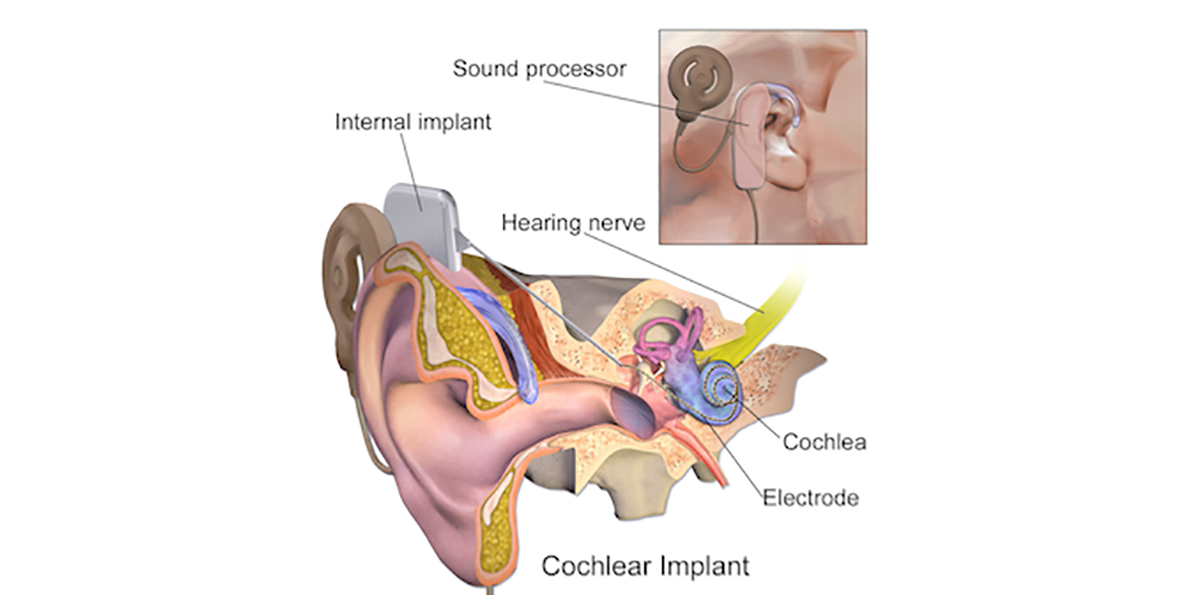
Cochlear Implant Surgery
Cochlear implant surgery is a procedure to place a cochlear implant – an electronic device that restores partial to substantial hearing to the deaf and hard of hearing. It is surgically implanted in the inner ear and activated by a device worn outside the ear.
Unlike a hearing aid, a cochlear implant does not make sound louder or clearer. Instead, the device bypasses the damaged cochlea (inner ear) and directly stimulates the nerve of hearing, allowing individuals who are severely to profoundly hearing-impaired to receive sound. Sensorineural (‘nerve’) hearing loss can usually be ameliorated with hearing aid usage. When hearing loss is so severe that hearing aids are not adequate, cochlear implant surgery is an excellent option.
Cochlear implants work by converting speech and environmental sounds into electrical signals, bypass damaged hair cells in the inner ear, and send these signals to the hearing nerve. The implant consists of a small electronic device, which is surgically implanted under the skin behind the ear, and an external speech processor and microphone, which are worn behind the ear. The microphone picks up sound and the speech processor translates it into distinctive electrical signals. These “codes” are transmitted across the skin to the implanted electrodes in the cochlea. The electrodes’ signals stimulate the auditory nerve fibers to send information to the brain where it is interpreted as meaningful sound.
Surgical Procedure
Implant surgery is performed under general anesthesia and lasts from two to three hours. An incision is made behind the ear to open the mastoid bone leading to the middle ear. The procedure may be done as an outpatient or may (rarely) require an overnight stay in the hospital. Your doctor will discuss the details of the surgery with you.
About one month after surgery, your team places the signal processor, microphone, and implant transmitter outside your ear and adjusts them. This is the first time that you will hear after the surgery. They teach you how to look after the system and how to listen to sound through the implant. Some implants take longer to fit and require more training. Your team will probably ask you to come back to the clinic for regular checkups and readjustment of the speech processor as needed.










